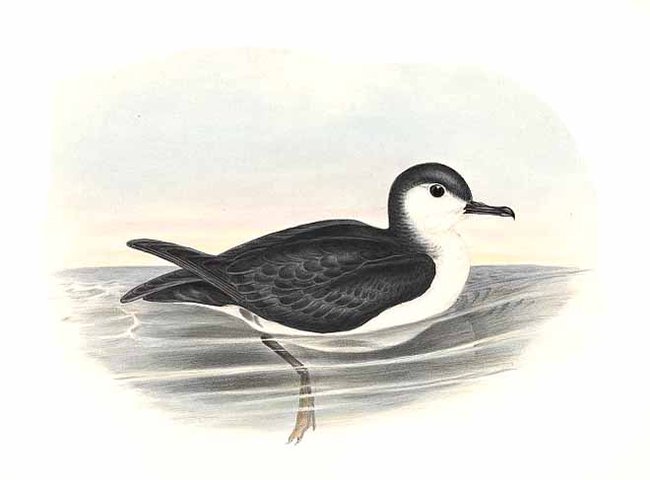|
| Query: Audubon's shearwater | Result: 10th of 10 | |
Southern Little Shearwater (Puffinus assimilis) - Wiki
| Subject: | Southern Little Shearwater (Puffinus assimilis) - Wiki
| |

| Resolution: 650x480
File Size: 32221 Bytes
Upload Date: 2007:12:13 09:54:35
|
Little Shearwater
From Wikipedia, the free encyclopedia
Order: Procellariiformes
Family: Procellariidae
[Photo] Puffin semblable - Puffinus assimilis - Little Shearwater. Author: John Gould (1804-1881). Source: www.oiseaux.net/photos/john.gould/puffin.semblable.1.html
The Little Shearwater (Puffinus assimilis), sometimes called Southern Little Shearwater to distinguish it from the North Atlantic Little Shearwater which was formerly included in this species, is a small shearwater in the seabird family Procellariidae.
It nowadays contains 5 accepted subspecies, with mtDNA cytochrome b sequence data indicating that the North Atlantic Little Shearwater (boydi and baroli) is closer to Audubon's Shearwater (Austin 1996, Heidrich et al. 1998), and myrtae being closer to the Hawaiian and possibly Townsend's Shearwater (Austin et al. 2004). Heinroth's Shearwater was also sometimes considered a subspecies of this bird; the relationship between the Little and Audubon's Shearwater is probably not as close as long believed (Austin 1996, Heidrich et al. 1998, Austin et al. 2001, but see also Penhallurick & Wink 2004, and Rheindt & Austin 2005).
This species occurs throughout the oceans of the Southern Hemisphere south of the Tropic of Capricorn.
It breeds in colonies on islands and coastal cliffs, nesting in burrows which are only visited at night to avoid predation by large gulls.
This bird has the typically "shearing" flight of the genus, dipping from side to side on stiff wings with few wingbeats, the wingtips almost touching the water, but in light winds has a more flapping flight than its larger relatives. This bird looks like a flying cross, with its wings held at right angles to the body, and it changes from black to white as the black upperparts and white undersides are alternately exposed as it travels low over the sea.
This is a gregarious species, which can been seen in large numbers from boats or headlands, especially on passage in autumn.
At 25-30 cm in length with a 58-67 cm wingspan, it is like a small Manx Shearwater but has proportionally shorter and broader wings, with a pale area on the inner flight feathers. Its bill is more slender than that of Manx, and its dark eye stands out against the surrounding white area.
It feeds on fish and molluscs. It does not follow boats. It is silent at sea, but at night the breeding colonies are alive with raucous cackling calls.
Despite the scientific name, this species is completely unrelated to the puffins, which are auks, the only resemblance being that they are both burrow-nesting seabirds.
Subspecies
Puffinus assimilis assimilis (Gould, 1838), Tasman Sea Little Shearwater
Puffinus assimilis elegans Giglioli & Salvadori, 1869, South Atlantic Little Shearwater
Puffinus assimilis tunneyi Mathews, 1912, Western Australia Little Shearwater
Puffinus assimilis kermadecensis Murphy, 1927, Kermadec Little Shearwater
Puffinus assimilis haurakiensis J. H. Fleming & Serventy, 1943, New Zealand Little Shearwater
http://en.wikipedia.org/wiki/Little_Shearwater
| The text in this page is based on the copyrighted Wikipedia article shown in above URL. It is used under the GNU Free Documentation License. You may redistribute it, verbatim or modified, providing that you comply with the terms of the GFDL. |
|
 |

|

|
Audubon's shearwater
10/10 |
 |
 |
^o^
Animal Pictures Archive for smart phones
^o^
|
|